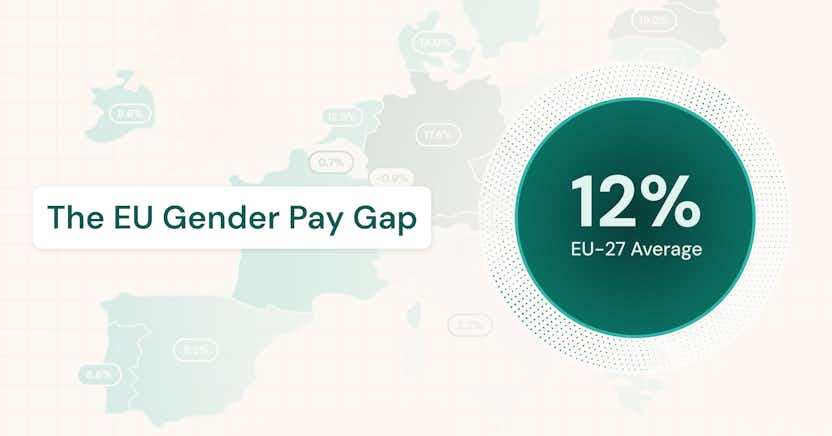What Is Pay Equity Software?
Pay equity software is a specialized digital tool used to assess, monitor, and address disparities in employee compensation across demographic groups. It facilitates the statistical analysis of pay data to identify unjustified differences in compensation and to support equitable pay practices. These tools help organizations meet compliance obligations, enhance pay transparency, and embed fairness into compensation strategy by providing a structured approach to analyzing and resolving pay disparities.
Unlike general compensation management systems, which manage salary planning and budgeting, pay equity software focuses specifically on fairness and equity in compensation outcomes. It is often integrated into broader HR or compensation platforms to enable consistent and ongoing review of pay practices.
Why is pay equity software important?
As expectations around workplace fairness increase globally, organizations are under growing pressure to demonstrate that they compensate employees equitably. Pay equity software plays a critical role in this landscape by providing the infrastructure needed to assess compensation data through an equity lens.
The importance of pay equity software is driven by several key factors. First, legislation such as the European Union’s Pay Transparency Directive and various U.S. state-level laws require organizations to report on pay gaps and conduct equity assessments (see beqom’s Checklist for EU Pay Transparency Readiness). Second, social expectations around equity and inclusion have made pay fairness a reputational and strategic issue, not just a legal one. Third, internal transparency and employee trust depend on the ability to demonstrate that pay decisions are free from bias.
Without purpose-built tools, conducting a statistically sound and audit-ready pay equity analysis can be time-consuming, error-prone, and difficult to scale. Pay equity software allows organizations to automate and institutionalize this process.
What are the key features of pay equity software?
Pay equity software varies in sophistication, but certain core features are common to most platforms. These features are designed to facilitate accurate analysis, actionable insights, and traceable documentation.
Most pay equity tools include:
- Data ingestion and normalization tools, which standardize compensation and demographic data from various sources for analysis.
- Job matching and comparability frameworks, allowing users to define appropriate peer groups based on role, grade, function, or geography.
- Statistical modeling capabilities, including regression analysis and cohort comparison, to evaluate whether demographic variables are significantly associated with pay differences after controlling for legitimate factors.
- Dashboards and visualizations that present disparities by department, location, job family, or other dimensions.
- Outlier identification and remediation tools, enabling organizations to flag and correct unexplained pay gaps.
- Audit trails and documentation support, helping to ensure compliance with legal standards and internal governance requirements.
- Scenario modeling to forecast the cost and impact of proposed pay adjustments before implementation.
Some advanced platforms also integrate with compensation planning systems to allow real-time adjustments during salary review cycles.
Why do organizations need technology to manage pay equity?
Manual equity assessments are increasingly inadequate in organizations with complex pay structures, multinational footprints, or diverse employee populations. Spreadsheet-based approaches introduce risk through data inconsistencies, lack of auditability, and limited capacity for real-time insight.
Pay equity software addresses these challenges by:
- Enabling repeatable and standardized processes.
- Reducing the risk of error or subjective decision-making.
- Supporting compliance with jurisdiction-specific laws and disclosure requirements.
- Providing documentation to defend pay practices in the event of audits or litigation.
- Integrating with other HR and compensation systems for a holistic view of pay practices.
As expectations for transparency grow, organizations need scalable systems that can generate insights, inform action, and demonstrate accountability. Pay equity software transforms pay equity from a reactive audit to an ongoing, embedded business process.
Who benefits from pay equity software?
Pay equity software creates value for multiple stakeholder groups, both within and outside the organization.
- HR and compensation teams benefit from the ability to conduct comprehensive and compliant analyses without relying on external consultants or manual processes.
- Business leaders gain visibility into pay equity metrics and their alignment with broader talent and performance goals.
- Finance teams can model remediation scenarios and align pay equity efforts with budget planning.
- Employees and candidates gain confidence that compensation decisions are data-driven and fair.
- Legal and compliance teams have the tools and documentation necessary to meet evolving regulatory standards.
- Investors and boards increasingly view pay equity metrics as part of environmental, social, and governance (ESG) reporting.
By aligning pay equity with operational and strategic goals, organizations can build trust, reduce risk, and strengthen their reputation as equitable employers.
What are the common approaches to pay equity analysis, and what are their trade-offs?
Organizations can conduct pay equity analyses in several ways, each with benefits and limitations.
- External consultants may offer deep expertise and objectivity but can be costly and less scalable for ongoing monitoring.
- In-house analyses using spreadsheets or basic analytics may be cost-effective but are prone to error, difficult to audit, and hard to replicate.
- Pay equity software provides a balance of scalability, reliability, and transparency by offering tools specifically designed for this purpose.
Compared to ad hoc or outsourced solutions, software enables continuous monitoring, integration with compensation planning, and better internal ownership of the process.
How is pay equity software different from compensation management software?
While both types of software deal with employee compensation, their purposes and functionalities differ.
Compensation management software is primarily designed to plan, manage, and administer pay decisions, including merit increases, bonuses, and salary budgets. It ensures alignment with market benchmarks and internal pay structures.
In contrast, pay equity software focuses on the fairness of those decisions across demographic groups. It examines whether individuals in comparable roles are paid equitably after accounting for legitimate factors such as experience, location, or performance.
In many organizations, the two systems are integrated to ensure that equity insights inform compensation planning in real time.
How can you tell if your pay equity software is effective?
Evaluating the performance of pay equity software requires both technical and strategic criteria.
Indicators of an effective system include:
- The ability to process and analyze large volumes of compensation and demographic data accurately.
- Support for statistically sound methods, including regression analysis and cohort comparisons.
- Clear, accessible reporting for both technical and non-technical audiences.
- Alignment with regulatory requirements and audit readiness.
- Integration with compensation, HR, and DEI systems.
- Support for remediation planning and scenario modeling.
- User adoption by HR, legal, and business stakeholders.
Feedback from users, internal audit reviews, and progress in narrowing pay disparities can all provide evidence of effectiveness.
What are best practices for using pay equity software?
To ensure success, organizations should approach pay equity software implementation with a structured, cross-functional strategy. Key best practices include:
- Setting clear goals for what the organization wants to achieve (for example, regulatory compliance, closing demographic gaps, embedding fairness into pay reviews).
- Ensuring data quality and standardization across systems.
- Involving legal, HR, compensation, and DEI leaders in tool selection and governance.
- Establishing a consistent cadence for reviews (for example, annually or before compensation cycles).
- Communicating transparently with leadership and employees about the process and its outcomes.
- Monitoring the impact of remediation efforts and refining pay practices over time.
Embedding pay equity software into compensation workflows, rather than treating it as a standalone tool, helps ensure that equity insights influence real-world decisions.
Frequently asked questions (FAQs) about pay equity software
- Is pay equity software required by law?
While software as such is not legally required, many jurisdictions around the world require regular pay equity analysis or reporting. Pay equity software helps organizations meet these obligations efficiently and defensibly. - Can small or mid-sized companies benefit from pay equity software?
Yes. While large enterprises often have more complex needs, smaller companies also benefit from scalable, automated tools to manage compliance and demonstrate a commitment to fairness. - How does pay equity software support DEI initiatives?
By providing visibility into disparities across gender, race, and other demographics, the software enables data-driven interventions that align with broader diversity, equity, and inclusion goals. - What types of data are needed for pay equity analysis?
Core data typically includes base salary, bonus, job level, tenure, location, performance ratings, and demographic attributes. The quality and completeness of this data are essential to a valid analysis. - Is employee consent needed to conduct a pay equity analysis?
Requirements vary by jurisdiction. In most cases, aggregate or anonymized data is used, but organizations should consult legal counsel to ensure compliance with data privacy laws. - How often should pay equity software be used?
Best practice is to conduct analysis at least annually, and ideally before compensation planning or organizational restructuring. But the use of compensation software can embed pay equity into the daily compensation decision making processes to enable an always-on approach to pay equity.
Summary
Pay equity software is a critical tool for organizations seeking to build fair, transparent, and compliant compensation practices. By enabling the systematic analysis of pay data across demographic groups, it supports both legal compliance and strategic workforce goals. For Compensation and Benefits professionals, pay equity software provides the visibility and control needed to embed fairness into every stage of the pay lifecycle. When integrated with broader compensation systems, it transforms equity from an aspiration into a measurable, actionable standard.
Explore more on this topic:
- How tech can drive your pay equity journey
- Youtube video: Pay Equity Explained
- The Pay Equity Playbook: A Strategic Approach to HR
- Local requirements - Pay equity analyses and reporting
- Preparing for the EU Pay Transparency Directive: A Checklist for your Organization
- A Complete Guide to Compensation Management






